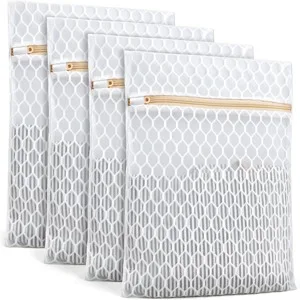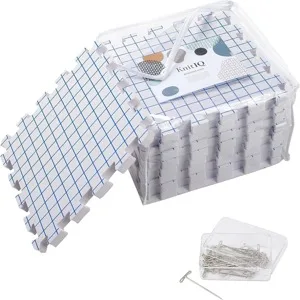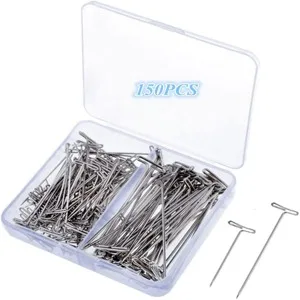Whether you’ve spent weeks knitting a cozy sweater or crocheting a colorful blanket, learning how to wash yarn projects correctly is essential for keeping them looking beautiful and lasting for years. In this guide, you’ll learn how to wash yarn by fiber, decode washing symbols, and block your pieces to a perfect finish.
If you’re new to yarn crafts, you may also enjoy reading The Ultimate Yarn Crafts Guide for a complete beginner-friendly foundation with tips, techniques, and inspiration.
1. How to Wash Yarn: Start With the Yarn Label
Before washing any knitted or crocheted item, always check the yarn label.
The label tells you:
- Fiber content (wool, cotton, acrylic, etc.)
- Recommended water temperature
- Whether it’s safe for machine washing
- Drying and ironing instructions
Want a refresher on every symbol and stat you’ll see? Read our Yarn Label Guide. If you’re choosing yarn for a washable project, our Yarn Weights Guide can help you pick the right thickness for blankets and garments.
If you’re new to yarn vocabulary, our Yarn Terms Guide explains the most common knitting and crochet terms you’ll see on patterns and labels.
2. How to Wash Yarn: Understand Washing Symbols
When learning how to wash yarn, always start by checking the yarn label. This small step can save you hours of frustration later.
Common care symbols include:
- Tub with dots: water temperature (1 dot = cold, 2 = warm)
- Hand in tub: hand wash only
- Triangle: bleaching rules
- Square with circle: tumble dry settings
- Iron icon: ironing temperature
- Circle: dry cleaning instructions
Following these prevents shrinking, felting, or fiber damage, core to how to wash yarn safely.
3. General Washing Tips for Knits & Crochet
- When in doubt, hand wash. It’s the safest approach.
- Use cold or lukewarm water (max 30–40°C / 86–104°F).
- Choose a mild, pH‑neutral detergent such as a wool wash; avoid bleach and fabric softeners.
- Support the item when wet (fibers are weaker). Gently press water out; don’t wring.
- Lay flat to dry on a towel or rack to prevent stretching.
4. How to Wash Different Yarn Fibers
- Wool (Non‑Superwash) – Hand wash only; cold/lukewarm water; wool‑specific detergent; lay flat to dry.
- Wool (Superwash) – Gentle machine wash in a mesh bag; cold water; lay flat to dry for best results.
- Alpaca & Cashmere – Hand wash with wool wash or baby shampoo; cool water; squeeze gently; dry flat.
- Silk – Hand wash cool; mild, pH‑neutral detergent; dry flat or on a padded hanger away from sun.
- Cotton – Machine gentle; cold or warm water; lay flat or tumble low.
- Linen – Machine gentle or hand wash; mild detergent; air‑dry flat or line dry.
- Bamboo – Gentle machine wash, cold; lay flat or tumble low.
- Acrylic / Nylon / Polyester – Machine washable; cold or warm water; avoid high heat (can melt/deform).
The Woolmark Company provides guidance on choosing detergents approved for wool.
New to knitting or crochet? Our Beginner Yarn Crafts guide covers starter tools, stitches, and first projects.
5. How to Wash a Yarn Blanket (Step-by-Step)
- Check fiber & label first. This determines the method.
- Wool blankets: hand wash or gentle machine wash in cold water with wool wash; lay flat to dry.
- Acrylic or blends: machine wash cold on gentle; tumble low or air dry flat.
- Support the weight when wet. Move the blanket with both hands; don’t let edges drag.
- Reshape while damp so corners and edges dry square.
6. How to Wash a Crochet Blanket
- Cotton crochet blankets handle machine gentle (cold) well.
- Wool or delicate fibers should be hand washed.
- Don’t hang to dry—it will stretch; lay flat and reshape while damp.
7. Blocking After Washing
- Blocking evens stitches, sets size, opens lace, and improves drape.
- Spray block: mist with water, pin, and dry.
- Wet block: soak, pat dry in a towel, pin to measurements, and let dry.
- Steam block: hover steam above the fabric (great for acrylic, don’t touch the iron to the fiber).
Recommended Washing & Blocking Tools
Use this quick kit to make washing and blocking simple and consistent:
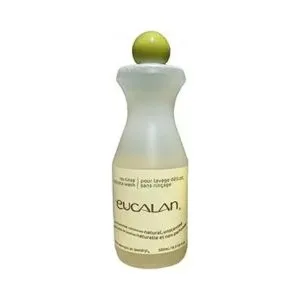
Eucalan No Rinse Delicate Wash
pH‑neutral, no‑rinse wool wash for delicate yarn projects.
Buy on Amazon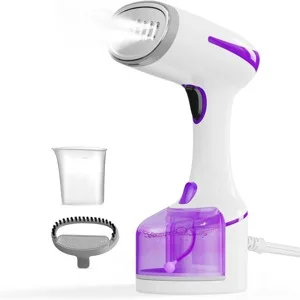
Handheld Clothes Steamer
Great for gentle steam blocking—hover, don’t press on acrylic.
Buy on Amazon


